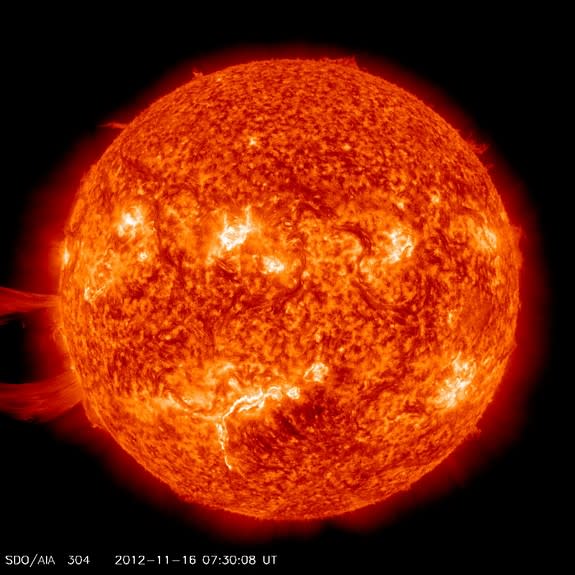 Science and Weather
Science and WeatherNASA records massive New Year’s Eve solar eruptions

While many revelers partied under New Year's Eve fireworks on Monday night, the Sun decided to put on a display of its own, firing off two massive solar eruptions from its eastern limb, which were caught on camera by NASA's orbiting Solar Dynamics Observatory (SDO).
[ Related: Earth swings around closest point to the Sun ]
These eruptions were what is known as 'solar prominences'. They differ from solar flares and coronal mass ejections (CMEs), but all three phenomena are related. A solar flare is a brightening on the surface of the Sun, caused by an immense release of energy. A solar prominence is a ribbon of plasma — hot ionized gas (although cooler than the gases in the corona) — that extends out from the Sun's surface in a loop, often times in association with a solar flare. A coronal mass ejection often occurs when a solar prominence stretches out from the surface of the Sun and snaps, flinging all that hot plasma in the ribbon away from the Sun. These phenomena doesn't always happen in conjunction with each other, though, so astronomers can't always predict when these events are going to happen. That's part of what makes solar astronomy so interesting, though!
These two prominences were fairly mild compared to what the Sun is capable of generating. They were roughly the equivalent of a setting off a few million megatons of nuclear weapons, whereas some prominences and CMEs can be several thousand times more powerful than that.
[ Related: The Official Geekquinox ‘Ten Cool Things to Watch the Sky for in 2013′ ]
Given that the current solar cycle — the 24th since astronomers began recording them — is due to peak sometime this year, they are a good example of why some are calling this particular one the weakest solar cycle of the space age.


